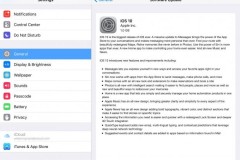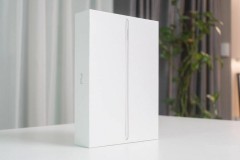Slide scanner ZEISS Axioscan 7 spatial biology provides scalable workflow automation
- Comprehensive solution portfolio – from multiplex immunofluorescence (mIF) staining reagents to spatial image analyses – designed to meet the challenges of clinical research
- Highly controlled and fully automated operation from slide to report, with optional Laboratory Information Management System (LIMS) integration
- Exceptional speed, high throughput, and reproducible results support drug development as well as translational and clinical biomarker research
Today marks the global launch of ZEISS Axioscan 7 spatial biology. The newly optimized slide scanner is the central component of a novel analytical workflow solution portfolio – spanning from sample staining to result reports – tailored to spatial biology applications in clinical research environments.
Spatial biology describes a highly active area of research which enables in-depth characterization of cellular interactions in their native tissue environment and has significantly fueled our understanding of various diseases and areas of therapy, especially in immuno-oncology. With the transition of this highly promising technology from basic research towards routine clinical application, the demands have significantly increased. Scientists in contract research organizations (CROs), the pharmaceutical industry, biotechnology as well as other related high-throughput laboratories are now facing new challenges when applying spatial biology to support drug development in biomarker discovery, translational research, and clinical trial monitoring. Existing methods are complicated, difficult to scale, and oftentimes do not provide data of sufficient quality or reproducibility to support their work.
“ZEISS has long-standing expertise in providing robust and high-quality solutions for demanding research environments,” says Dr. Michael Albiez, Head of ZEISS Research Microscopy Solutions. “We are now providing an end-to-end workflow to bring this quality to high-throughput applications. Automation, standardization, ease-of-use, and seamless integration of AI-powered image analysis enable spatial biology at scale.”
Automated scanning of up to 100 slides in a single run
ZEISS Axioscan 7 spatial biology is newly optimized for multiplex immunofluorescence (mIF) imaging across large cohorts of samples. It allows up to eight fluorescence-stained biomarkers to be studied at the same time and can fully automatically scan up to 100 samples in a single run, significantly enhancing research throughput. A carefully coordinated selection of hardware and software solutions contributes to superior reproducibility of the images and data for longitudinal and multi-site studies.
mIF staining reagents
The OmniVUE™ reagents from our partner Ultivue leverage advanced DNA-based amplification technology designed for high specificity and dynamic range, which can be optimally recorded with the ZEISS Axioscan 7 spatial biology. Ultivue offers ready-to-use validated assays paired with co-optimized analysis algorithms, eliminating the need for assay development and providing instructive data as much as three times faster than competing technologies. The improved instrument and workflow are fully compatible with a broad range of assays, including various mIF reagents, standard IHC, and H&E. Samples stained with different assays can easily be imaged automatically in the same batch.
Fully automated image analysis
The integrated solution by our partner Mindpeak makes image analyses for mIF samples as straightforward as for scoring of standard immunohistochemistry (IHC). Mindpeak’s leading technology for clinical-grade IHC image analysis and their streamlined cloud platform now enable the efficient analysis of IHC and mIF-stained tissue images generated by ZEISS Axioscan 7 spatial biology. Spatial biology assays can be paired with pre-optimized analytics that are automatically run after image acquisition, enabling efficient review processes and significantly accelerating the time to results.
Services for advanced lab automation
The new spatial biology workflow improves consistency and operational efficiency through an intuitive workflow manager software. Customization services are available to adapt the workflow to individual laboratory processes and to support integration with Laboratory Information Management Systems (LIMS).
AI-powered scanning and image analysis routines can be fully automated, documented, and controlled to meet lab-specific requirements, reducing the need for manual steps and supporting increased productivity and reproducibility. This enables spatial biology assays to be implemented as part of routine applications, even at high volumes ranging from hundreds to thousands of samples per day.
The solution is available both as a standalone offering and as an upgrade for existing ZEISS Axioscan 7 systems, providing flexible options for implementation and enhanced operational efficiency.
For more information, click here.
Press contact
ZEISS Research Microscopy Solutions
Vybhav Sinha
Phone: +49 3641 64 3949
Email: press.microscopy@zeiss.com
www.zeiss.com/newsroom
About ZEISS
ZEISS is an internationally leading technology enterprise operating in the fields of optics and optoelectronics. In the previous
fiscal year, the ZEISS Group generated annual revenue around 11 billion euros in its four segments Semiconductor Manufacturing Technology, Industrial Quality & Research, Medical Technology and Consumer Markets (30 September 2024).
For its customers, ZEISS develops, produces and distributes highly innovative solutions for industrial metrology and quality assurance, microscopy solutions for the life sciences and materials research, and medical technology solutions for diagnostics and treatment in ophthalmology and microsurgery. The name ZEISS is also synonymous with the world's leading lithography optics, which are used by the chip industry to manufacture semiconductor components. There is global demand for trendsetting ZEISS brand products such as eyeglass lenses, camera lenses and binoculars.
With a portfolio aligned with future growth areas like digitalization, healthcare and Smart Production and a strong brand, ZEISS is shaping the future of technology and constantly advancing the world of optics and related fields with its solutions. The company's significant, sustainable investments in research and development lay the foundation for the success and continued expansion of ZEISS' technology and market leadership. ZEISS invests 15 percent of its revenue in research and development – this high level of expenditure has a long tradition at ZEISS and is also an investment in the future.
With over 46,000 employees, ZEISS is active globally in around 50 countries with more than 60 sales and service locations, around 40 research and development facilities, and 35 production facilities worldwide (30 September 2024). Founded in 1846 in Jena,
the company is headquartered in Oberkochen, Germany. The Carl Zeiss Foundation, one of the largest foundations in Germany committed to the promotion of science, is the sole owner of the holding company, Carl Zeiss AG.
Further information at www.zeiss.com
ZEISS Research Microscopy Solutions
ZEISS Research Microscopy Solutions is the leading provider of light, electron, X-ray microscope systems, correlative microscopy and software solutions leveraging AI technologies. The portfolio comprises of products and services for life sciences, materials and industrial research, as well as education and clinical routine applications. The unit is headquartered in Jena. Additional production and development sites are located in Germany, UK, USA and China. ZEISS Research Microscopy Solutions is part of the Industrial Quality & Research segment.
Further information at www.zeiss.com/microscopy
Attachments
- Axioscan-7_Viluma-7_system_3
- 2025_03_20__22_10__0168-Create Image Subset-Extended Depth of Focus-Stitching-Unsharp Mask-DAPI_compressed_no DAPI__c1-7
















